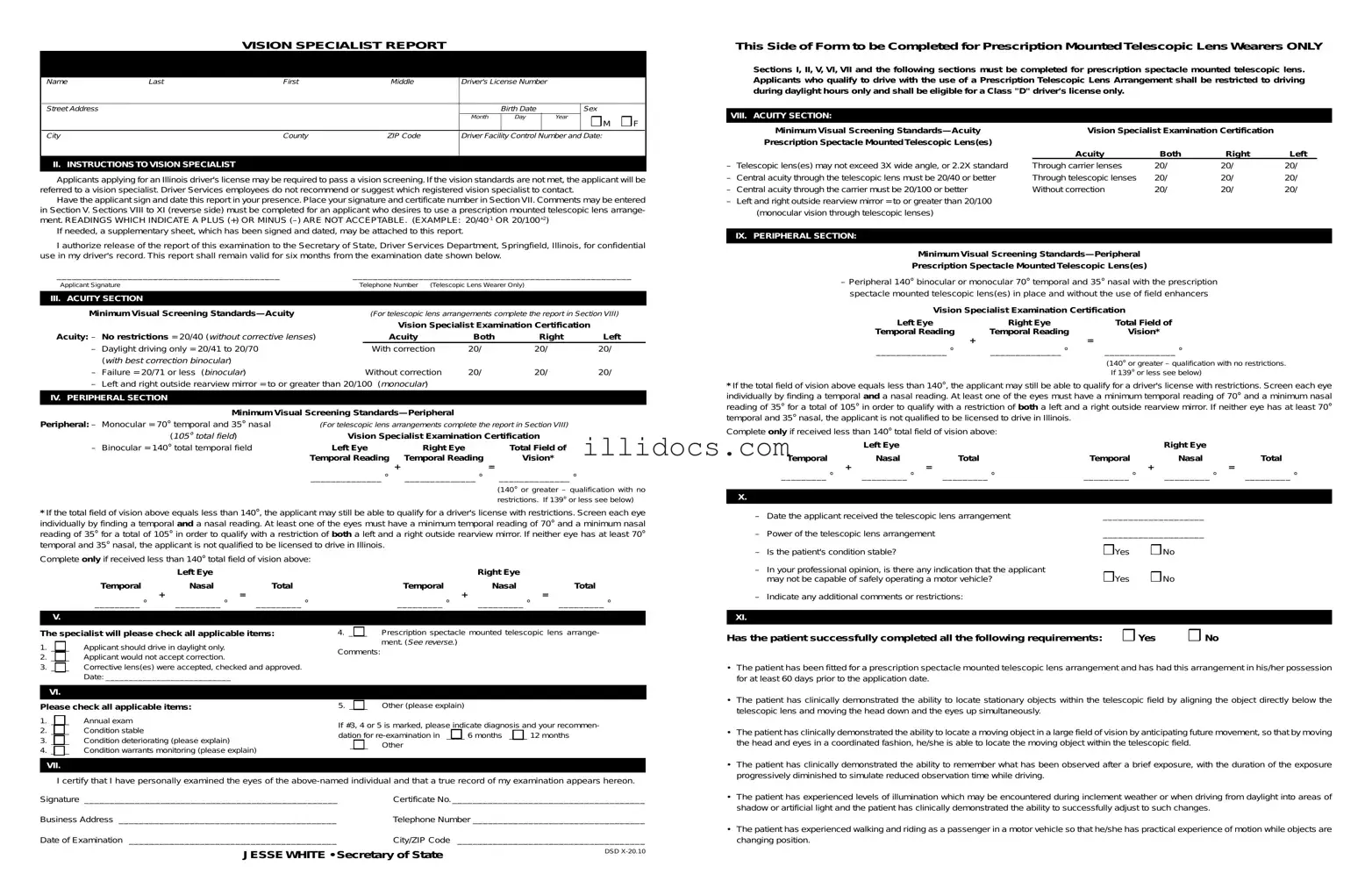What is the Illinois Vision Specialist Report form?
The Illinois Vision Specialist Report form is a document that must be completed by a vision specialist for individuals who do not meet the vision standards required for obtaining a driver's license in Illinois. It is used to assess the applicant's visual acuity and peripheral vision, ensuring they can safely operate a motor vehicle.
Who needs to fill out this form?
Individuals applying for an Illinois driver's license who do not pass the initial vision screening may need this form. A vision specialist must complete it to certify the applicant's visual capabilities and any necessary restrictions.
What information is required on the form?
The form requires personal information such as the applicant's name, address, birth date, and driver's license number. The vision specialist must provide details about the applicant's visual acuity, peripheral vision, and any recommendations for driving restrictions. The specialist's signature and certificate number are also needed.
How long is the report valid?
The Illinois Vision Specialist Report remains valid for six months from the date of the examination. After this period, a new report may be required if the applicant has not yet obtained their driver's license.
What if the applicant requires a telescopic lens arrangement?
If the applicant uses a prescription spectacle mounted telescopic lens arrangement, additional sections of the form must be completed. This includes specific visual acuity and peripheral vision standards that must be met to qualify for a driver's license with restrictions.
What are the visual acuity standards for driving?
To qualify without restrictions, the applicant must have a visual acuity of 20/40 or better without corrective lenses. For daylight driving only, the acuity can be between 20/41 and 20/70. If the acuity is 20/71 or less, the applicant is not qualified to drive.
What should a vision specialist include in their comments?
The vision specialist can provide comments on the applicant's condition, such as whether it is stable, deteriorating, or warrants monitoring. They may also note any recommendations for re-examination or additional restrictions based on the applicant's visual capabilities.
Are there any restrictions for applicants with telescopic lenses?
Yes, applicants who qualify to drive with a telescopic lens arrangement will be restricted to driving during daylight hours only. They will also be eligible for a Class "D" driver's license only.
What happens if the applicant does not meet the vision standards?
If the applicant does not meet the required vision standards, they will not qualify for a driver's license. However, they may be able to qualify with restrictions, such as using outside rearview mirrors, depending on their individual vision assessment.
